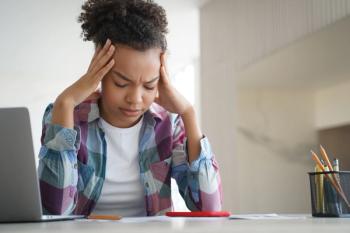
The Other SAD: Summer Seasonal Affective Disorder
You've heard about winter seasonal affective disorder, but what about summer?
Most clinicians are familiar with the seasonal affective disorder (SAD) associated with the winter season. The shorter and cooler days have an impact on the body’s internal clock, and result in symptoms like hypersomnia, carbohydrate cravings, and social withdrawal along with the traditional symptoms associated with depression such as difficulty concentrating, a sense of hopelessness and worthlessness, and sometimes even suicidal ideation. SAD is pervasive form of depression that lasts several months.
Less familiar is summer SAD, which presents in late spring or summer. Unlike its winter cousin, summer SAD is associated with insomnia, poor appetite, restlessness, an increase in anxiety and irritability, and even episodes of violent behavior.
In addition to the longer days, summer SAD maybe related to warmer temperatures, increases in pollen, or humidity. Patients may wake up earlier or stay up later as the amount of daylight increases. Summer SAD is also associated with a decrease in melatonin, making it harder to drift to sleep. In addition, the disruption of routines may also play a role in summer SAD.
The carefree days of summer may also present an extra risk for some patients, who feel an increased pressure to have fun. Social can further fuel feelings of inadequacy, with patients self-imposing unrealistic expectations based on seeing everyone else having fun.
Fortunately, there are some strategies to treat summer SAD. For starters, clinicians should discourage patients from comparing themselves with others and focus on positive opportunities. It also is important to emphasize routine and structure. The ideals of a healthy diet, specifically with fresh produce available, should be encouraged, as should exercise. Patients can also consider blackout shades to help improve sleep patterns.
Dr Noonan is a physician, mental health and wellness coach; author of 5 books on managing mental health and mood disorders with a print and video blog; consultant; group facilitator; and Certified Peer Specialist. She has a unique perspective having lived with a mood disorder and bridges that space between provider and recipient of mental health services, which resonates with many people. Dr Noonan is the inaugural recipient of the national Depression and Bipolar Support Alliance Peer Support Specialist of the Year 2022. Her most recent books, published by Johns Hopkins University Press, include: Take Control of Your Depression: Strategies to help you feel better now (2018); Helping Others with Depression: Words to Say, Things to Do (2020); andReconnecting after Isolation: Coping with Anxiety, Depression, Grief, PTSD and More (2022).
References
1. Munir S, Abbas M.
2. Wehr TA, Giesen HA, Schulz PM, et al.
3. Akram F, Jennings TB, Stiller JW, et al.
Newsletter
Receive trusted psychiatric news, expert analysis, and clinical insights — subscribe today to support your practice and your patients.

















